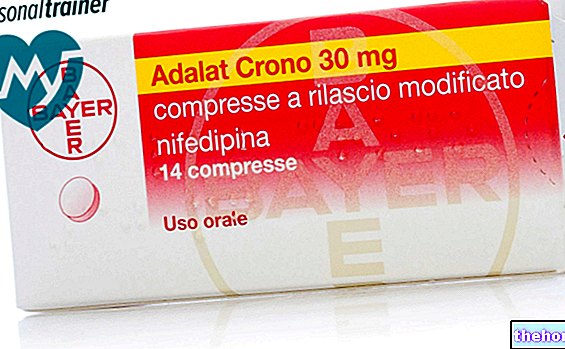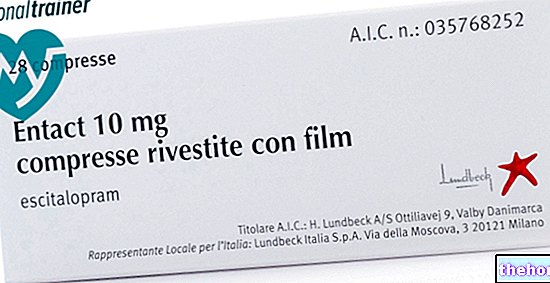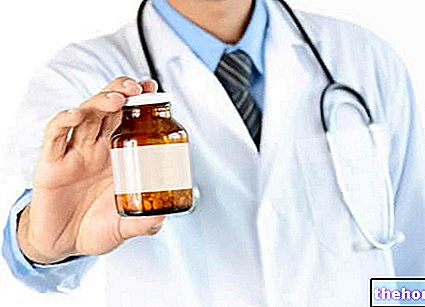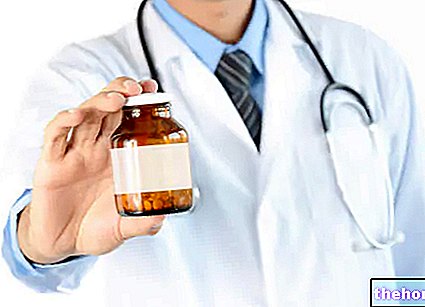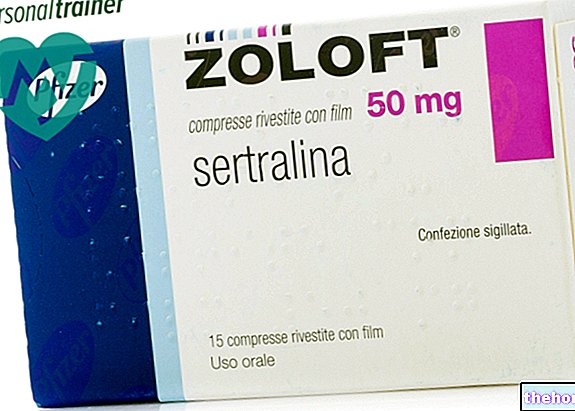Active ingredients: Vitamins B1 + B6 + B12
Benexol gastro-resistant tablets
Benexol low dosage
Powder and solvent for solution for injection for intramuscular use
Benexol package inserts are available for pack sizes: - Benexol gastro-resistant tablets, Benexol low dose, Powder and solvent for solution for injection for intramuscular use
- Benexol high dosage: powder and solvent for intramuscular injection solution
Why is Benexol used? What is it for?
Pharmacotherapeutic group
Benexol belongs to the therapeutic category of vitamins based on vitamin B1 + B6 + B12.
Therapeutic indications
Deficient states of vitamins B1, B6, B12 and their various clinical forms (deficient polyneuritis, neuritis during treatment with isoniazid and other vitamin B6 antagonists). Adjuvant therapy in non-deficient neuritis and in the course of radiotherapy.
Contraindications When Benexol should not be used
Hypersensitivity to the active substances or to any of the excipients.
- in pregnancy and while breastfeeding
- in children under 12 years of age
- in patients with renal or hepatic insufficiency.
Precautions for use What you need to know before taking Benexol
Particular caution should be used when the product is prescribed together with levodopa for the treatment of Parkinson's disease, as pyridoxine in high doses can antagonize its therapeutic effect (see section Interactions).
Interactions Which drugs or foods can modify the effect of Benexol
Tell your doctor or pharmacist if you are taking or have recently taken any other medicines, including those obtained without a prescription.
Vitamin B1 (thiamine)
The medicines listed below inhibit the activity of thiamine:
- Thiosemicarbazone
- 5-fluorouracil
Vitamin B6 (pyridoxine)
Several drugs interfere with pyridoxine and can reduce its plasma levels. Among these:
- Cycloserine
- Hydralazine
- Isoniazid
- Deoxypyridoxine
- D-penicillamine
- Oral contraceptives
- Alcohol.
Vitamin B6 may reduce the effectiveness of the following medicines:
- Levodopa: pyridoxine enhances the metabolization of levodopa into dopamine and therefore reduces its therapeutic anti-parkinsonian effects at the doses usually used. However, this interaction does not occur when carbidopa is used together with levodopa.
- Altretamine
- Phenobarbital
- Phenytoin
- Amiodarone: Co-administration may aggravate amiodarone-induced photosensitivity.
Vitamin B12 (cyanocobalamin)
Aminoglycosides, antihistamines (H2 blockers), metformin and other related biguanides, oral contraceptives, aminosalicylic acid, and proton pump inhibitors can reduce the absorption of vitamin B12 from the gastrointestinal tract. Therefore, in patients taking these medicines, the need for vitamin B12 may be increased.
Chloramphenicol can delay or interrupt the reticulocyte response to vitamin B12. Therefore it is necessary to monitor the blood count in case of concomitant intake.
Interactions with laboratory tests
Vitamin B1 (thiamine)
- Thiamine can give rise to false positives in the determination of urobilinogen with Ehrlich's reagent.
- High doses of thiamine can interfere with the spectrophotometric determination of serum theophylline.Vitamin B6 (pyridoxine)
- Urobilinogen: Pyridoxine can cause a false positive in the test with Ehrlich's reagent.
Warnings It is important to know that:
Do not exceed the recommended dose and duration of treatment.
The product should not be taken at higher doses or for longer periods than recommended, as overdose may be associated with severe neurotoxicity (risk of overdose, see "overdose"). Repeated administration of intramuscular preparations can in rare cases cause anaphylactic reactions. The clinical picture may in some respects simulate anaphylactic shock. In order to avoid these rare anaphylactic reactions, oral administration should always be preferred, whenever possible.
If this is not possible, the intramuscular injection should take place as slowly as possible and should be done by experienced and qualified personnel (see "Dose, method and time of administration").
Pregnancy, breastfeeding and fertility
If you are pregnant or breast-feeding, think you may be pregnant or are planning to have a baby, ask your doctor or pharmacist for advice before taking this medicine.
Pregnancy
Benexol is contraindicated during pregnancy
Feeding time
Benexol is contraindicated in breastfeeding
Women of childbearing age
Women of childbearing potential should use effective contraceptive methods during treatment.
Important information about some of the ingredients
The solution for injection contains para hydroxybenzoates which can cause allergic reactions (even delayed) and, exceptionally, bronchospasm.
Dosage and method of use How to use Benexol: Dosage
Adults and adolescents from 12 years of age
Benexol gastro-resistant tablets
1 tablet per day.
Benexol tablets should be swallowed with a sip of liquid, without chewing or dissolving them previously.
The product is generally prescribed for periods of one or more weeks. In some cases, the doctor may extend the treatment up to a few months.
Benexol low dosage powder and solvent
Benexol low dosage is indicated when the absorption is markedly reduced and for the treatment of hypovitaminosis. The dose is one ampoule per day, unless otherwise prescribed. it must be done as slowly as possible. The solution to be injected is prepared at the moment by dissolving the lyophilized dry substance with the special solvent contained in the package.
Children
Due to the high dosage of vitamin B6, the product is contraindicated in children under 12 years (see "Contraindications").
Renal / hepatic insufficiency
Due to the high dosage of vitamin B6, the product is contraindicated in patients with renal or hepatic insufficiency (see "Contraindications").
Overdose What to do if you have taken an overdose of Benexol
At the recommended doses, Benexol does not cause hypervitaminosis.
Symptoms of an overdose include sensory and / or peripheral neuropathy and neuropathic syndromes, nausea, headache, paraesthesia, somnolence, increased serum AST levels (SGOT) and decreased serum folic acid levels. These effects are usually reversible upon cessation of treatment.
In case of accidental intake of an excessive dose of Benexol, notify your doctor immediately or go to the nearest hospital.
IF YOU ARE IN ANY DOUBT ABOUT THE USE OF BENEXOL, CONTACT YOUR DOCTOR OR PHARMACIST.
Side Effects What are the side effects of Benexol
Like all medicines, Benexol can cause side effects, although not everybody gets them.
The adverse reactions listed below are derived from spontaneous reports.
As these reactions are reported on a voluntary basis it is not possible to estimate their frequency
Gastrointestinal disorders
Diarrhea, dyspepsia, nausea, vomiting, gastrointestinal and abdominal pain.
Disorders of the immune system
Allergic reaction and anaphylactic reaction.
Hypersensitivity reactions with corresponding laboratory pictures and clinical manifestations, including asthma syndrome, mild to moderate reactions affecting the skin and / or respiratory tract, gastrointestinal tract and / or cardiovascular system.
Symptoms may include face edema, dyspnoea, hives, angioedema, pruritus, and cardiorespiratory distress.
If an allergic reaction appears, stop treatment and consult a doctor.
For solution for injection only: severe reactions including anaphylactic shock with possible fatal outcome have been associated with parenteral use.
Renal and urinary disorders
Abnormal smelling urine
Nervous system disorders
Peripheral neuropathy and polyneuropathy, paraesthesia
Skin and subcutaneous tissue disorders
Photosensitivity reaction, rash, erythema, itching, urticaria and bullous dermatitis.
Compliance with the instructions contained in the package leaflet reduces the risk of undesirable effects.
Reporting of side effects
If you get any side effects, talk to your doctor or pharmacist. This includes any possible side effects not listed in this leaflet.
You can also report side effects directly via the website: https://www.aifa.gov.it/content/segnalazioni-reazioni-avverse By reporting side effects you can help provide more information on the safety of this medicine.
Expiry and Retention
Expiry: see the expiry date indicated on the package
Warning: do not use the medicine after the expiry date indicated on the package.
The expiry date refers to the product in intact packaging, correctly stored.
Gastro-resistant tablets: Store at a temperature not exceeding 25 ° C
Medicines should not be disposed of via wastewater or household waste. Ask your pharmacist how to throw away medicines you no longer use. This will help protect the environment.
KEEP OUT OF THE REACH AND SIGHT OF CHILDREN
Composition and pharmaceutical form
Composition
Benexol gastro-resistant tablets:
one gastro-resistant tablet contains: active ingredients: thiamine hydrochloride (Vit. B1) 250 mg, pyridoxine hydrochloride (Vit. B6) 250 mg, cyanocobalamin (Vit. B12) 500micrograms. Excipients: colloidal hydrated silica, povidone, magnesium stearate, pregelatinized starch, mannitol, talc, methacrylic acid - ethyl acrylate copolymer (1: 1), carmellose sodium, macrogol 6000, glycerol triacetate.
Benexol low dosage powder and solvent for solution for injection for intramuscular use:
one vial of powder contains: active ingredients: vitamin B1 (in the form of cocarboxylase) 38 mg, pyridoxine hydrochloride (Vit. B6) 200 mg, hydroxocobalamin (Vit. B12) 1000 micrograms (in the form of hydroxocobalamine acetate).Excipients: methyl parahydroxybenzoate, propyl parahydroxybenzoate, sodium hydroxide.
One solvent ampoule contains: excipients: water for injections.
Pharmaceutical form and content
Benexol gastro-resistant tablets: 20 gastro-resistant tablets.
Benexol low dosage powder and solvent for solution for injection for intramuscular use: 6 ampoules of powder + 6 ampoules of solvent 2 ml.
Source Package Leaflet: AIFA (Italian Medicines Agency). Content published in January 2016. The information present may not be up-to-date.
To have access to the most up-to-date version, it is advisable to access the AIFA (Italian Medicines Agency) website. Disclaimer and useful information.
01.0 NAME OF THE MEDICINAL PRODUCT
BENEXOL
02.0 QUALITATIVE AND QUANTITATIVE COMPOSITION
Benexol gastro-resistant tablets
One gastro-resistant tablet contains: thiamine hydrochloride (Vit. B1) 250 mg, pyridoxine hydrochloride (Vit. B6) 250 mg, cyanocobalamin (Vit. B12) 500 mcg.
Benexol low dosage powder and solvent
One vial of powder contains: vitamin B1 (as cocarboxylase) 38 mg, pyridoxine hydrochloride (Vit. B6) 200 mg, hydroxocobalamin (Vit. B12) 1000 mcg (as hydroxocobalamin acetate).
Benexol high dosage powder and solvent
One vial of powder contains: vitamin B1 (as cocarboxylase) 38 mg, pyridoxine hydrochloride (Vit. B6) 300 mg, hydroxocobalamin (Vit. B12) 5000 mcg (as hydroxocobalamine acetate).
For the full list of excipients, see section 6.1.
03.0 PHARMACEUTICAL FORM
- Gastro-resistant tablet
- Powder and solvent for solution for injection for intramuscular use
04.0 CLINICAL INFORMATION
04.1 Therapeutic indications
Deficient states of vitamins B1, B6 and B12 and their different clinical forms (deficient polyneuritis, neuritis during treatment with isoniazid and other vitamin B6 antagonists). Adjuvant therapy in non-deficient neuritis and in the course of radiotherapy.
04.2 Posology and method of administration
Adults and adolescents from 12 years of age
Benexol gastro-resistant tablets
1 tablet per day.
Benexol tablets should be swallowed with a sip of liquid, without chewing or dissolving them previously.
The product is generally prescribed for periods of one or more weeks. In some cases, the doctor may extend the treatment up to a few months.
Benexol low dosage powder and solvent
Benexol low dosage is indicated when the absorption is markedly reduced and for the treatment of hypovitaminosis. The dose is one ampoule per day, unless otherwise prescribed. it must be done as slowly as possible. The solution to be injected is prepared at the moment by dissolving the lyophilized dry substance with the special solvent contained in the package.
Benexol high dosage powder and solvent
Benexol high dosage is indicated for the initial therapy of forms with particularly intense symptoms. The dose is one vial per day, unless otherwise prescribed. The injection must be done by deep intramuscular route by qualified and expert personnel and the administration must be done as slowly as possible. The solution to be injected is prepared at the moment, dissolving the dry substance lyophilized with the special solvent contained in the package.
Children
Due to the high dosage of vitamin B6, the product is contraindicated in children under 12 years (see section 4.3).
Renal / hepatic insufficiency
For the high dosage of vitamin B6, the product is contraindicated in patients with renal or hepatic insufficiency (see section 4.3).
04.3 Contraindications
Hypersensitivity to the active substances or to any of the excipients.
For the high dosage of vitamin B6, the product is contraindicated:
- in pregnancy and during breastfeeding
- in children under 12 years of age
- in patients with renal or hepatic insufficiency.
04.4 Special warnings and appropriate precautions for use
Do not exceed the recommended dose and duration of treatment.
For the high dosage of pyridoxine hydrochloride (vitamin B6), the product should not be taken at higher doses or for longer than recommended, as improper use may be associated with severe neurotoxicity (risk of overdose, see section 4.9). .
Particular caution should be used when the product is prescribed together with levodopa for the treatment of Parkinson's disease, as pyridoxine in high doses can antagonize its therapeutic effect.
Repeated administration of preparations containing vitamin B1 by the intramuscular route can in rare cases cause anaphylactic reactions in predisposed patients. The clinical picture may in some respects simulate anaphylactic shock.
In order to avoid these rare anaphylactic reactions, oral administration should always be preferred, whenever possible. If this is not possible, intramuscular injection should be done as slowly as possible by qualified and experienced personnel (see section 4.2).
04.5 Interactions with other medicinal products and other forms of interaction
Vitamin B1 (thiamine)
Thiosemicarbazone and 5-fluorouracil inhibit the activity of thiamine.
Interactions with laboratory tests
Thiamine can give rise to false positives in the determination of urobilinogen with Ehrlich's reagent.
High doses of thiamine can interfere with the spectrophotometric determination of serum theophylline.
Vitamin B6 (pyridoxine)
Several drugs interfere with pyridoxine and can reduce its plasma levels. Among these:
• Cycloserine
• Hydralazine
• Isoniazid
• Deoxypyridoxine
• D-penicillamine
• Oral contraceptives
• Alcohol.
Vitamin B6 enhances the metabolization of levodopa into dopamine and therefore reduces its therapeutic effects at the doses usually used.
Vitamin B12
Aminoglycosides, antihistamines (H2 blockers), metformin and other related biguanides, oral contraceptives, aminosalicylic acid, and proton pump inhibitors can reduce the absorption of vitamin B12 from the gastrointestinal tract. Therefore, in patients taking these medicines, the need for vitamin B12 may be increased.
04.6 Pregnancy and lactation
The product is contraindicated during pregnancy and breastfeeding, due to the high dosage of vitamin B6, which greatly exceeds the recommended dietary dosage.
04.7 Effects on ability to drive and use machines
Benexol does not affect the ability to drive or use machines.
04.8 Undesirable effects
The adverse reactions listed below derive from spontaneous reports and therefore it is not possible to organize them by frequency categories.
Gastrointestinal disorders
Diarrhea, dyspepsia, nausea, abdominal pain.
Disorders of the immune system
Allergic reaction. Symptoms may include hives (secondary mechanism), face edema (secondary mechanism), dyspnoea, erythema, rash and blisters. If an allergic reaction appears, stop treatment and consult a doctor.
For solution for injection only: anaphylactic shock with possible fatal outcome has been associated with parenteral use.
Renal and urinary disorders
Abnormal smelling urine
Respiratory, thoracic and mediastinal disorders *
Dyspnea.
* only as a manifestation of an allergic reaction
Skin and subcutaneous tissue disorders
Rash, erythema.
04.9 Overdose
At the recommended doses, Benexol does not cause hypervitaminosis.
Symptoms of an overdose include sensory neuropathy and neuropathic syndromes, nausea, headache, paraesthesia, somnolence, increased serum AST levels (SGOT) and decreased serum folic acid levels.
These effects are reversible upon cessation of treatment.
05.0 PHARMACOLOGICAL PROPERTIES
05.1 Pharmacodynamic properties
Pharmacotherapeutic group: Vitamin B1 in association with Vitamin B6 and Vitamin B12, ATC code: A11DB.
Benexol contains in association vitamin B1, vitamin B6 and vitamin B12.
Vitamin B1 in the form of diphosphoric ester, enters the constitution of some enzymes that play a primary function in the cellular metabolism of sugars.
Vitamin B6 intervenes in the metabolism as a coenzyme for numerous transformations of amino acids, including decarboxylation and transamination.
Vitamin B 12 (cyanocobalamin or hydroxocobalamin) participates in numerous biochemical reactions, essential among other things for the good functionality of the nerve cell.
Hydroxocobalamin possesses the same biological characteristics as cyanocobalamin; however, it differs from this for some pharmacokinetic peculiarities which allow to obtain higher and persistent blood levels (slow absorption from the injection point, less rapid renal elimination). The elective use of vitamins in therapy is represented by prophylaxis and treatment of the manifestations of deficiencies due to poor food intake, reduced absorption or increased demand. In particular, the association finds useful use in deficient neuritis (ethyl or gravidic) and as an adjuvant in neuritis of other origins.
05.2 Pharmacokinetic properties
No specific studies have been performed with this product, but the pharmacokinetics of the individual components are well documented.
Vitamin B1: absorption in the intestine occurs by sodium-dependent active transport and by passive diffusion. Thiamine is then stored in the tissues until saturation and then excreted in the urine as pyrimidine derivative or in unchanged form.
Vitamin B6: is easily absorbed in the intestine. In the liver, 4-pyridoxic acid is formed, which is the main excretion product. It derives from the action of hepatic aldehyde-oxidase on pyridoxal, a substance into which pyridoxine is transformed in the organism.
Vitamin B12: administered orally, cyanocobalamin is absorbed partly by simple diffusion through the intestinal mucosa, partly after binding to intrinsic factor, glycoprotein with a molecular weight of 60,000. The vitamin B12-intrinsic factor complex interacts with specific receptors of the ileus mucosa, determining the passage of the vitamin principle into the circulation. Vitamin B12 then binds to plasma globulins, the transcobalamins, to be transported into the tissues and stored in the liver. L "excretion occurs to a small extent through the bile and mainly by the kidney. Parenterally, hydroxocobalamin causes more prolonged plasma concentrations than those of cyanocobalamin.
05.3 Preclinical safety data
No specific studies have been performed with this product, but the preclinical safety of the individual components is well documented.
06.0 PHARMACEUTICAL INFORMATION
06.1 Excipients
Benexol gastro-resistant tablets
colloidal hydrated silica, povidone, magnesium stearate, pregelatinized starch, mannitol, talc, methacrylic acid - ethyl acrylate copolymer (1: 1), carmellose sodium, macrogol 6000, glycerol triacetate.
Benexol low dose powder and solvent for solution for injection for intramuscular use
The powder vial contains: methyl parahydroxybenzoate, propyl parahydroxybenzoate, sodium hydroxide.
One solvent vial contains: water for injections
Benexol high dosage powder and solvent for solution for injection for intramuscular use
The powder vial contains: methyl parahydroxybenzoate, propyl parahydroxybenzoate, sodium hydroxide.
One solvent vial contains: water for injections
06.2 Incompatibility
None known.
06.3 Period of validity
Benexol gastro-resistant tablets: 12 months
Benexol low dose powder and solvent for solution for injection for intramuscular use
Benexol high dosage powder and solvent for solution for injection for intramuscular use
3 years.
The ampoules should be used immediately after reconstitution of the product.
06.4 Special precautions for storage
Ampoules: This medicinal product does not require any special storage conditions.
Gastro-resistant tablets: Do not store above 25 ° C
06.5 Nature of the immediate packaging and contents of the package
Benexol gastro-resistant tablets
Blisters made of thermoformed plastic material coupled with aluminum tape.
Benexol low dose powder and solvent for solution for injection for intramuscular use
Benexol high dosage powder and solvent for solution for injection for intramuscular use
Dark glass vials (amber yellow) I hydrolytic class for the powder.
Colorless glass vials I hydrolytic class for the solvent.
The various containers are enclosed in the respective cardboard box together with the illustrative leaflet.
06.6 Instructions for use and handling
No special instructions.
07.0 MARKETING AUTHORIZATION HOLDER
Bayer S.p.A. Viale Certosa 130, 20156 Milan
08.0 MARKETING AUTHORIZATION NUMBER
Gastro-resistant tablets
20 gastro-resistant tablets AIC n ° 020213029
Low dosage of powder and solvent for solution for injection for intramuscular use
6 powder vials + 6 solvent vials 2 ml AIC n ° 020213118
High dosage of powder and solvent for solution for injection for intramuscular use
6 lyophilized vials + 6 solvent vials 2 ml AIC n ° 020213132
09.0 DATE OF FIRST AUTHORIZATION OR RENEWAL OF THE AUTHORIZATION
Renewal: June 2010
10.0 DATE OF REVISION OF THE TEXT
AIFA Determination of: July 2011

